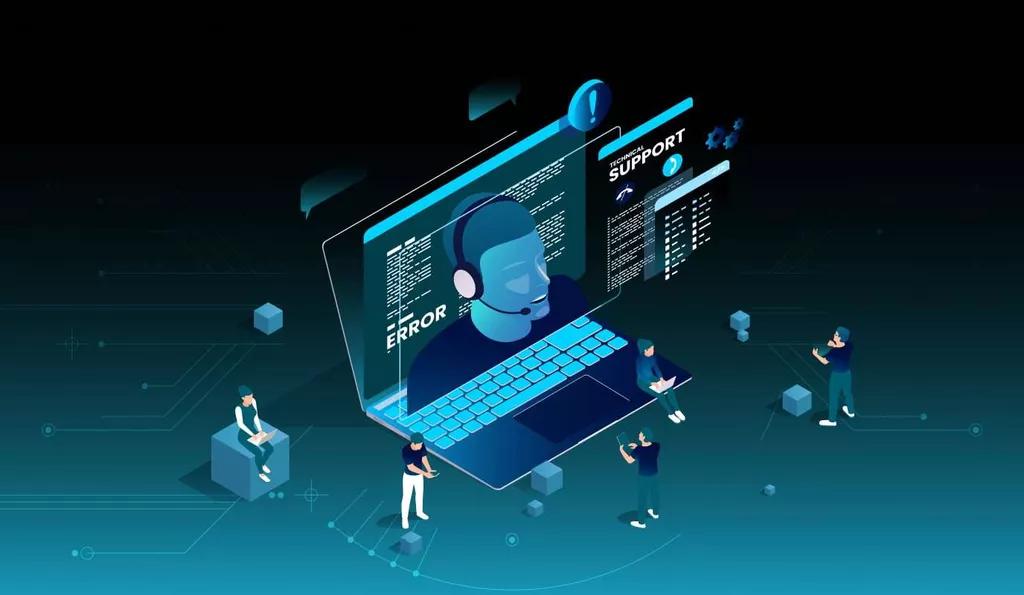Lindsay’s LinkedIn: https://www.linkedin.com/in/lindsaylebensohn/
Welcome to our Customer Support Interview Series. Throughout the series we will interview customer support experts from various spheres and industries and get their thoughts on the current state of customer support, industry insights they’ve attained through their experience, and their opinion on what the future of customer support will look like. Today, we are delighted to have Lindsay Lebensohn, Director of Customer Support at Tradeshift, with us for our debut interview and to start us on this journey into the depths and future of customer support.
Customer Support Experience
1. Can you share a brief overview of your journey in the customer support industry?
I am a career customer support person, which is something that is a little unusual to find. I started working in Customer Support Operations five years ago at Tradeshift. I started out as the only person in Operations and over time I managed to build and develop the Operations team and eventually became the Director of all Customer Support. I absolutely love support. I could talk about it all day long; it is such an interesting topic and I believe that it is the heart of every business, regardless of industry or size.
2. What has been one of your most memorable achievements or experiences during your time working in customer support?
Over the past two years we have managed to become 250% more efficient at closing tickets per person and our Customer Satisfaction has increased by 20%. We were able to achieve this by investing in the right things. People are always looking for the silver bullet, that one thing that can instantly solve all problems, but unfortunately, most of the time, it doesn’t exist.
Our success was the result of investing in three key areas – people, processes, and tooling.
- People: We heavily invested in people, making sure we found the right people and created the right roles to add to our teams. We also improved both strategic and non-strategic training for employees. Not only enhancing our agents’ skills when helping clients resolve their issues, but also helping them to improve and develop their skill sets that they can take beyond Customer Support. We want people to leave our organization as better, more rounded people.
- Processes: We are always reevaluating our processes. Process does not happen in a vacuum and we need to adapt our ways of working to accommodate changes going on around us. We’ve implemented swarming methodology, revised our escalations process and revised our queue management methods among other things.
- Tooling: We’ve put a lot of investment into both our customer facing tools and our internal tools that drive productivity. Our enhancements to our customer facing tooling makes it easier for users to contact and interact with us. For our internal tools, our Support agents now have access to tools built specifically for them that enables them to resolve tickets faster and more effectively for our users. This investment has led to happier people and happier users which is something I am quite proud of.
3. How significant is personalization and customization in providing satisfying and memorable customer support experiences for your clients?
Personalization and customization are extremely important to us when it comes to providing high quality customer support experiences. At times, it can provide some challenges, but our customers are at the heart of everything we do. It is imperative to understand your customers’ needs and provide a personal touch. That’s great support.
Tradeshift Practices
4. How do you ensure a balance between swift responses and providing accurate and helpful solutions when dealing with queries from customers?
In general, we deal with two different user groups – Sellers and Enterprise customers. Sellers’ questions usually can be broken down into roughly 10 common problems. The focus is more on dealing with the volume of queries from Sellers and providing them with an appropriate response in a timely manner.
When it comes to Enterprise customers, there is more variety, a much higher level of complexity and they require a more personal touch. Here we use a customer cluster system. Our agents work in small clusters meaning agents don’t have to become experts in everything, but focus on having a deep understanding of a smaller group of our customers’ configurations. Through teamwork, our agents can deal with any question. This system also allows our Enterprise customers to build closer, more personal relationships with our agents as they will get to know exactly who they are talking to and who to contact if they are only dealing with the same few people each time. It helps to make the process smoother and the customers feel closer to the company. Our ticket creation flow also ensures that we are gathering more information from the user at the point of ticket creation, helping us to further improve our understanding of customer queries as well and minimizes the back and forth, which can be frustrating to users.
Another benefit of using the cluster model is that we are spreading out our knowledge base amongst all members of the cluster, rather than having just one or two people knowing everything and the rest of the team relying on them for help. This helps to avoid the situation of losing domain knowledge, if that person/those people are out sick, on vacation, or leave the company. The cluster system helps to keep things more balanced and run smoothly, even with staffing changes and absences. I can recommend it!
5. With the rapid advancements in artificial intelligence, have you explored the utilization of AI-powered support systems to assist your customer support team?
In the long-term, our vision is to leverage AI technology to drive internal improvement, however, at the moment I would say I have a healthy skepticism towards it. That’s not to say we are not dipping our toes in the AI pond though. Our engineering team is using it to check their code for quality, but we are cautious about what information we feed into it. We have a duty to protect both Tradeshift and our customers, especially when it comes to data, intellectual property and proprietary information, and we’re not willing to risk it on untested or unproven systems.
So we are being extremely careful with our implementation of it, as it is something that is still developing, but I do believe that it will play a large role in the future of the customer support industry as a whole.

Overviewing Challenges and Future Development of Customer Support
6. As we progress into a more globalized economy, providing customer support in multiple languages has become essential for businesses. How have you addressed this challenge?
Tradeshift has a very global user base with the majority of customers based in Europe, the Americas and Asia. We don’t offer phone support as it creates a need for localization and the Customer Support industry is generally moving away from phones. Instead, we offer text based support in web form and via chat. There is an integrated translation service in the ticketing system which allows messages to and from customers to be translated instantly. We also have a number of multilingual agents working in our teams, particularly, in our team in Bucharest, Romania, so if we ever have any unique requests that require direct communication between our team and the customer, we often are able to find someone in our team who can speak that language.
We also run a self-service model first and have made substantial investment into improving our Knowledge Base which is translated into the main languages on our platform. Currently we are using a translations service, but I can see in the future using AI translations for more of the niche languages on our platform. The quality of translations from these services is very high and something that my team is really looking at right now.
7. In your experience, what do you think are the main hesitations or barriers for organizations when considering the implementation of AI-driven customer support systems?
I believe a big reason why companies are hesitant to implement AI-driven customer support systems is due to their fears that it is not safe. I don’t think companies want to risk feeding such sensitive information as data, IP or proprietary information into an AI model without knowing 100% that it will be safe.
Another big issue is the fact that the development of such technology is still at a very early stage. If you turn it customer facing right away, you face a risk of a drop in customer experience, which is not something any Customer Support organization wants to do. There is still work to be done in developing and perfecting such systems. Also, we still don’t know what unintended consequences could potentially arise with the implementation of AI-driven customer support systems, giving companies another reason to hesitate implementing them.
8. Given the trajectory of AI technology, how do you envision the customer support field developing and evolving in the next 5-10 years?
I can’t say exactly what the industry will look like in 5-10 years time, but I know for sure that it will be drastically different. The Support industry changes all the time and of course there will be an impact with the introduction of a new radical technology. I see AI playing a large role supporting people in their jobs and tasks and removing a lot of the repetitiveness that we can see. AI will never eliminate the need for people, there will still be a need for human involvement , whether as a validation point, decision point or at some other critical intervention step.
I also think that support agents will become more specialized. AI will focus more on general tasks and answering routine questions, while human agents will deal with more technical issues that require a personal touch. It is all about customer experience and what we know is that customers want a human touch. Business is a relationship between two people, not a person and a machine and we need to look at how we can use AI to make us more effective at our jobs for better outcomes for our customers, rather than how we can use AI to replace people.
Conclusion
As we wrap up our captivating conversation with Lindsay, it’s clear that the industry is on the edge of a monumental change. One that will see technology play an even bigger role than ever before, but successful adaptation will hinge on maintaining the human touch. No matter what, customers will still want that personal interaction and to know that there is a person at the other end of the line listening to them. The empathy, understanding, and personalized communication from human agents is virtually irreplaceable and will continue to play a vital role in the customer support industry for some time.
